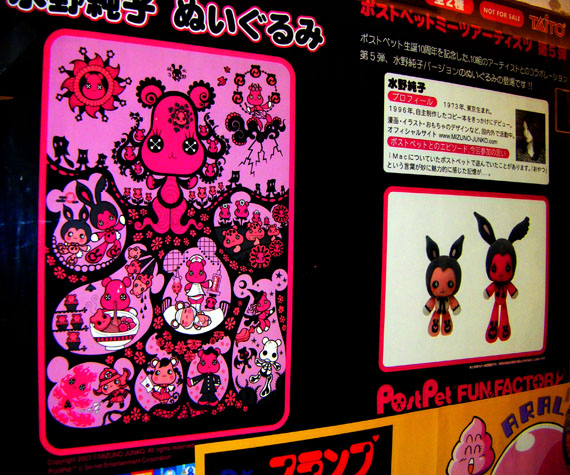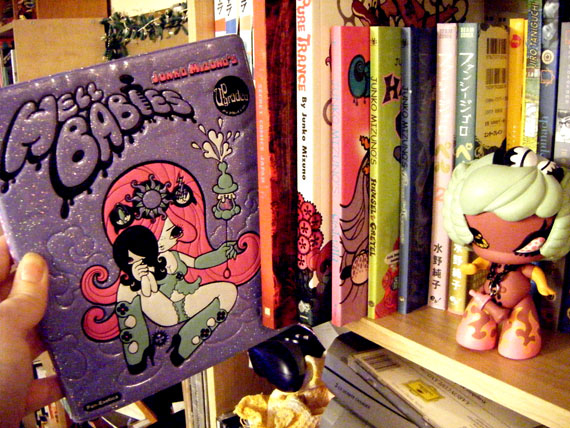 I hinted at it in some of my brief New York posts, but I thought I’d maybe blog a little more thoroughly about my conversation with Marc Weidenbaum, the fella at Viz in charge of Shonen Jump and Shojo Beat, about his work developing a new line of original comics for Viz. We found a bench to sit and chat for an hour on the Friday of the New York Comic Con–just after the announcement of ULTIMO! a collaboration between Stan Lee and Hiroyuki Takei debuting in Japan that very day. It’s worth noting that, for the purposes of journalistic integrity, Marc and I have become fairly cordial over the past few years, and our conversation about the new developments at Viz were much more friendly than professional. I even offered to send this to him before I posted it (something I don’t normally do) in case I got anything wrong, but he said not to bother. So, here’s my take on what’s happening at Viz with their forthcoming line of original comics.
I hinted at it in some of my brief New York posts, but I thought I’d maybe blog a little more thoroughly about my conversation with Marc Weidenbaum, the fella at Viz in charge of Shonen Jump and Shojo Beat, about his work developing a new line of original comics for Viz. We found a bench to sit and chat for an hour on the Friday of the New York Comic Con–just after the announcement of ULTIMO! a collaboration between Stan Lee and Hiroyuki Takei debuting in Japan that very day. It’s worth noting that, for the purposes of journalistic integrity, Marc and I have become fairly cordial over the past few years, and our conversation about the new developments at Viz were much more friendly than professional. I even offered to send this to him before I posted it (something I don’t normally do) in case I got anything wrong, but he said not to bother. So, here’s my take on what’s happening at Viz with their forthcoming line of original comics.
First and foremost, Weidenbaum’s new title at Viz is “Editor-in-Chief, Magazines. Vice President, Original Publishing” which kind of makes sense, as the two manga magazines are where more-or-less all of the original content is being generated at Viz right now. The recent cover-art/interview/short comic by Bryan Lee O’Malley on Shoujo Beat sort of brought this fact to everyone’s attention, though Viz has done original content in the past, including a Pokemon comic strip for newspapers a few years ago. But the original publishing aspect of Marc’s title will likely become very important to the comics industry in the next few years.
According to Marc, it’s all about television.
Marc Weidenbaum: “We’re in a golden age of television right now,” specifically referring to the critically and commercially successful serialized entertainment offered up by HBO, BBC, Showtime, and even some of the networks. Marc feels that there are all of these wonderfully episodic shows that build up a serial storyline with amazing cliffhangers that you can’t miss. And he doesn’t seem inclined to cow-towing to any particular ‘style’ or genre of story either, with a crime drama being just as interesting and well produced as a comedy or historical epic… Editorializing a bit here, it’s no mystery that Brian K. Vaughan (for example) was picked up for LOST–his work on Y: The Last Man, Ex Machina, and even Runaways is built on the gripping last-page reveal, and his work is structured in an incredibly compelling way. If I’m reading Marc correctly, he sees this not so much as a model, but as inspiration for a new line of comics work: One that has broad appeal, strong construction, and the benefit of a talented and trained editorial staff.
 That last part is particularly intriguing to me, because while producing licensed material does have Viz editors sharing some of the same duties as their original-content producing counterparts in the rest of the North American comics industry–scheduling, proofing, working with creative talent–the Japanese editorial system, the one that Marc referenced a couple of times, is quite different and even more involved than anything you’ll find in North America… In a bit of a coincidence I picked up a new manga by Fanfare/Ponent-Mon at the New York Comic Con just before I was talking to Marc, called Disappearance Diary by Hideo Azuma. It’s about this manga-ka that goes nuts from stress and becomes a bum living in the mountains. In it, the protagonists manga editors are variously portrayed as abrasive, mean, and egomaniacs who threaten and taunt him, draw over his artwork to change it to their liking, and ignore or encourage any number of truly life-destroying behaviours on the part of Azuma-san… as long as the work comes in on time. It’s a comedy. And autobiography to boot.
That last part is particularly intriguing to me, because while producing licensed material does have Viz editors sharing some of the same duties as their original-content producing counterparts in the rest of the North American comics industry–scheduling, proofing, working with creative talent–the Japanese editorial system, the one that Marc referenced a couple of times, is quite different and even more involved than anything you’ll find in North America… In a bit of a coincidence I picked up a new manga by Fanfare/Ponent-Mon at the New York Comic Con just before I was talking to Marc, called Disappearance Diary by Hideo Azuma. It’s about this manga-ka that goes nuts from stress and becomes a bum living in the mountains. In it, the protagonists manga editors are variously portrayed as abrasive, mean, and egomaniacs who threaten and taunt him, draw over his artwork to change it to their liking, and ignore or encourage any number of truly life-destroying behaviours on the part of Azuma-san… as long as the work comes in on time. It’s a comedy. And autobiography to boot.
But Marc’s a smart guy with–believe it or not!–creator interests at heart. He seemed to be talking about a sort of a hybrid system, where he and other editors at Viz had worked closely with Editors within the Japanese comics production system to learn from them, and have brought this system back to North America to put their own spin on it. This also tied in nicely to the fact that Viz’s big guest-of-honour the NYCC weekend wasn’t a manga-ka, but rather an editor, (one Mr. Asano who edits Bleach and Shaman King amongst other top-of-the-charts releases). Marc has a lot of respect for editing and editors in general, and the idea of working with a creator to produce the most successful and strongest possible work. It’s the kind of idea that I can feel myself bristling at, as I type it out now, but hearing it come out of Marc’s mouth I totally believed it… I do have to say that will not be the sort of editorial guidance that every creator is looking for, particularly not in an industry where the idea of editorial mandate from DC and Marvel has become so reviled that it seems every other comics publisher’s editorial guidelines are a hands-off reaction against them.
 I was having a hard time getting an idea of this ‘line’ at this point in our conversation, what it might look like, and I couldn’t tell if it was going to be akin to Tokyopop’s “hire’m all and let the market sort’em out” original content strategy, or something a little different. So I asked him flat out–name five books published in the last few years that you could see as part of this line. His response? “None.” Really, not one book? “Not really, I don’t see a lot of the work fitting our ideas. Maybe elements of Scott Pilgrim come closest to it, or Ed Brubaker’s Scene of the Crime or Sleeper. Stuff that’s really good, solid concept-stuff but with a twist to it, a hook.” I believe I mentioned that Scene of the Crime and Sleeper sold fairly poorly at the time, but I don’t remember what, if any, response came of it.
I was having a hard time getting an idea of this ‘line’ at this point in our conversation, what it might look like, and I couldn’t tell if it was going to be akin to Tokyopop’s “hire’m all and let the market sort’em out” original content strategy, or something a little different. So I asked him flat out–name five books published in the last few years that you could see as part of this line. His response? “None.” Really, not one book? “Not really, I don’t see a lot of the work fitting our ideas. Maybe elements of Scott Pilgrim come closest to it, or Ed Brubaker’s Scene of the Crime or Sleeper. Stuff that’s really good, solid concept-stuff but with a twist to it, a hook.” I believe I mentioned that Scene of the Crime and Sleeper sold fairly poorly at the time, but I don’t remember what, if any, response came of it.
Said I: “I’ve talked to a number of creators working in the ogn or straight-to-collection format, and many of them have very similar concerns about the system of creating a graphic novel with little-or-no input for a year, and releasing these graphic novels to sometimes little or no feedback, and then going back to the drawing board. The idea of shorter serialization has been floated as a possible remedy…” Marc responded that things were still up in the air regarding format, but had heard and shared many of the same concerns. We talked a little bit more about various successes and failures but Marc was reluctant to name names, which I can appreciate…
“You know,” I said. “As soon as I post this you’re going to get flooded with submissions. Horrible people sending you their ideas for a sequel to Dragonball Z, all that shit.”
 He knew it, but made it pretty clear he had no interest in submissions right now. “Maybe in a few years we’ll open it up to submissions,” said Marc. “But right now I just want to see already completed work. What you’ve done, what you’re capable of.” So if you’re sitting on the world’s best manuscript for a 3400 part serial about a new level of Super-Saiyan, can it. At least for a little while. But I do have to say that Marc seemed quite genuine about wanting to see published work and specifically mentioned webcomics, mini-comics and self-pub’d work as well as professionally published material…
He knew it, but made it pretty clear he had no interest in submissions right now. “Maybe in a few years we’ll open it up to submissions,” said Marc. “But right now I just want to see already completed work. What you’ve done, what you’re capable of.” So if you’re sitting on the world’s best manuscript for a 3400 part serial about a new level of Super-Saiyan, can it. At least for a little while. But I do have to say that Marc seemed quite genuine about wanting to see published work and specifically mentioned webcomics, mini-comics and self-pub’d work as well as professionally published material…
It’s at this point in the conversation that my friend writer Ray Fawkes (Apocaplipstix, coming this summer from Oni Press) walked by the little concrete benches where we were seated and came and said hello. Ray has 4 projects in development with four different publishers at the moment, is incredibly talented, and above-all sounded like the exact sort of person who would be doing books that would fit with Marc’s idea for the Viz Original Content Line. I introduced them and mentioned something to this effect, and sure enough there was a warm exchange of business cards and a plan to talk further about an exchange of work… So if Marc wasn’t being genuine when he said he would happily look at published work, he was at least putting on a good face in front of my friend ;).
Sidebar: It’s worth noting that at the big Viz Panel the next day, this exact situation came up. Here, I’ll quote from “A Geek By Any Other Name”:
“Someone just asked about whether they’d be accepting any original series, and they answered that they weren’t really looking for anything, which is a little counter to what Brigid and other bloggers heard yesterday.”
I think that’s a pretty clever answer, actually, because Marc made that quite clear to me as well: They aren’t looking for anything in particular. They’re looking for talented people who’ve done great work–at this point in the game–and are probably looking to develop something with them as opposed to just accepting or rejecting a pitch. An important bit of semantics!
Now, you have to understand, all the while I’m having this conversation with Marc… I’m feeling pretty good about all of this actually, but this nagging phrase wouldn’t stop repeating itself in the back of my mind: “THE TOKYOPOP DEAL”. I fucking hate The Tokyopop deal, flat out. It’s awful and abusive of young creators, and while I haven’t gotten up and shouted I TOLD YOU SO at anyone two years later, the number of disenfranchised and angry Tokyopop creators has more-or-less done the work for me. I’m not particularly happy about being right of course; it is, at best, a pyrrhic victory.
“Marc,” I said. “Who owns it?” I was honestly not anticipating the response.
“The creators do. It’s going to be a standard book-industry type contract, although even there we’re doing a bit of tweaking. I believe in that, and we wanted a fair deal.”
Huh, how about that. We discussed it a little further, mentioning things like other-media adaptation rights and all that, and while we really only talked in generalities, it all sounded really reasonable. Maybe even… good. Marc relayed an anecdote about visiting a comics class at SVA the previous week, I think either he mentioned either Tom Hart or Matt Madden or Jessica Abel were teaching, and he was talking about this very line. The instructor sort of built up this menacing tone and said “And now we’ve got a hard question for you, Marc! WHO OWNS THE WORK!?” which I have to admit that’s kind of amazing, that ownership and contract discussions are a part of comics instruction now. But Marc said “oh, the creators.” and just sort of deflated the instructor’s bubble (it was funny, not dickish, at least when Marc told it). You have no idea how heartening it was to hear this, the idea that copyright (amongst many other rights) would reside with the creators of the work. Of course, no contract is perfect and each one is different and be sure to get a lawyer to read things over before you sign them, etc., but just hearing an affirmative and positive reaction to creator ownership coming from the spokesperson for a massive international corporation? Even one with Marc’s long history of publishing and working with comics creators (google him)? It’s fantastic.
Our conversation sort of drifted from that point as it seemed that I’d wrapped up everything I had to ask, and started mulling over my opinions of the prospects of this line. I can’t help but feel that the possibilities of a company as well-invested and an editor as well-intentioned as Viz and Marc both are could seriously shake up comics production, where the money becomes in line in both frequency and scale as Marvel and DC; where they could develop a very creatively supportive but still professional environment; where serialization and the possibility of easy access to the Japanese market (and work produced in a Japanese-fashion) could attract a whole new generation of manga-inspired creators.
Moreso than Vertigo’s announcement at the show that they were actively scouting out “original graphic novels” and, to my mind, trying to directly take projects away from Oni Press, Slave Labor, and Top Shelf, this feels like something that just isn’t being done in the industry right now, but when laid out as Marc Weidenbaum did for me, makes it seem essential… Possibly even as important to original comics content creation as manga was to the bookstores. It doesn’t take a genius to see that serialized original content with a strong narrative hook and enticing cliffhangers are part-and-parcel of the manga experience… perhaps with Weidenbaum’s affection for top-notch (and often very mature) television shows and evocations of Brubaker’s crime fiction, this line of books could be that mythical ‘stepping stone to adulthood’ that everyone wonders about for the aging manga demographic.
Or not. It’s pretty easy to look at what I’ve written here and see it as corporate-controlled comics, with nothing to offer the comics auteur. I can’t speak for Marc on this point but I do see validity to that point of view. There’s a reason that someone like Seth designs his books right down to hand-lettering the indicia and choosing the colour of the foil-stamping on the hardcover, you know? I don’t see that as what this line is about, and quite frankly there are lots of places to publish that sort of material that do it very well (Drawn & Quarterly, Fantagraphics, Pantheon, First Second, etc.). But a vision of the comics industry where compelling commercial comics don’t mean superheroes, half-assed movie pitches, or the occasional fluke from the majors (and let’s not forget that Y: The Last Man‘s commissioning editor was fired by Vertigo shortly after its launch…!)? At the very least, you can put me on that mailing list.
Anyhow, those are my impressions of the conversation I had with Viz’s new Vice President of Original Publishing. All of which are subject to the haze of memory and just having come off of a panel where I sat 15 feet from Stan Lee for an hour. Following our chat I walked Marc to a cab and resisted the urge to invite myself to his dinner with important people from Japan, which showed some tact on my part (though obviously less-so now that I blogged it). I ended up having a great dinner anyway (thank you, Dave & Raina), and didn’t see Marc for the rest of the weekend. Just goes to show you that it’s important to make time when you can, at these sorts of shows.
Thanks again for being so generous with your time Marc! I hope your inbox is not immediately flooded.
– Christopher
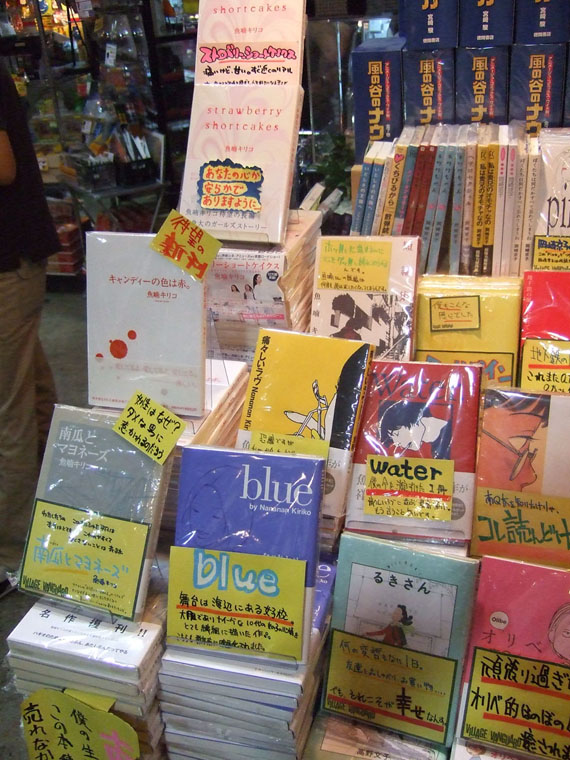 So just what do we want the manga industry to look like, anyway? I mentioned at the end of that last post that I let my own hopes and fears inform any predictions I might make… Prescribing the future of the industry, any industry is something of a sucker bet, something could happen tomorrow to send that industry wildly off course. Besides, predicting the future is best left to the people managing your retirement portfolio, I’d much rather describe what I would like to see, rather than what I think will happen.
So just what do we want the manga industry to look like, anyway? I mentioned at the end of that last post that I let my own hopes and fears inform any predictions I might make… Prescribing the future of the industry, any industry is something of a sucker bet, something could happen tomorrow to send that industry wildly off course. Besides, predicting the future is best left to the people managing your retirement portfolio, I’d much rather describe what I would like to see, rather than what I think will happen. So what do I want the manga industry to look like then? I think that Drawn + Quarterly has a good idea, with one prestige-format (meaning a format with actual prestige, like a hardcover book with lovely thick paper and a beautiful design, and not those flimsy little 48 page superhero comics with a spine) release of “mature manga” per year. If there were 3 or 4 publishers doing that, each with a nicely designed manga release per season (spring/fall), that’d be maybe 8-10 wonderful books per year, which I think that the market could bear, and that’d be lovely. Currently the number of high-end manga releases in a given year is about half of that, which accounts for the loud noises I make when they manage to drop. Add in the serialization of older seinen and adult books from publishers like Vertical, Viz, and Tokyopop? I think I’d be okay with that.
So what do I want the manga industry to look like then? I think that Drawn + Quarterly has a good idea, with one prestige-format (meaning a format with actual prestige, like a hardcover book with lovely thick paper and a beautiful design, and not those flimsy little 48 page superhero comics with a spine) release of “mature manga” per year. If there were 3 or 4 publishers doing that, each with a nicely designed manga release per season (spring/fall), that’d be maybe 8-10 wonderful books per year, which I think that the market could bear, and that’d be lovely. Currently the number of high-end manga releases in a given year is about half of that, which accounts for the loud noises I make when they manage to drop. Add in the serialization of older seinen and adult books from publishers like Vertical, Viz, and Tokyopop? I think I’d be okay with that.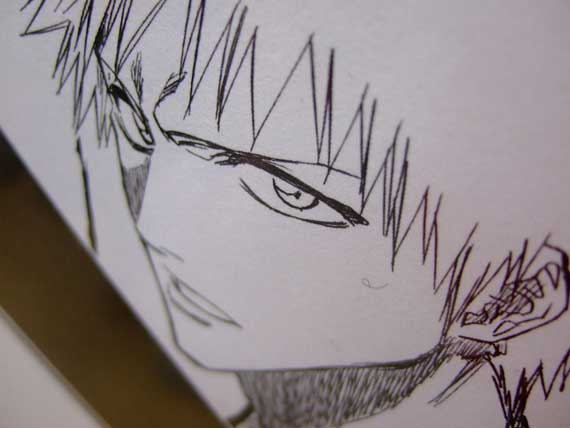



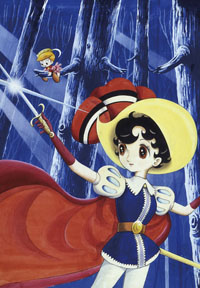 Over at The Comics Reporter, Tom Spurgeon’s “Five For Friday” feature solicits reader reaction on a specific theme, like your five favourite superheroes, five important moments in comics, or this past Friday’s “
Over at The Comics Reporter, Tom Spurgeon’s “Five For Friday” feature solicits reader reaction on a specific theme, like your five favourite superheroes, five important moments in comics, or this past Friday’s “ I hesitate to draw any major conclusions about this from such a limited sample pool… I do think that choosing a major reprint project is risky for any publisher, because every fan has their own particular favourites, and fans find different value in different projects. For example, despite everything he has done to turn me off of his work, Dave Sim is single-handedly responsible for making me want to dig deeper into the work of Al Williamson thanks to Glamourpuss #1 a few weeks back. It’s an oddball project, for sure, but if you can divorce Dave Sim the person from Dave Sim the guy who created a pretty solid comic book talking about the history of illustration and illustrators, it’s a good read. If not, please promise me at least to not wreck the copies I’ve got on the rack.
I hesitate to draw any major conclusions about this from such a limited sample pool… I do think that choosing a major reprint project is risky for any publisher, because every fan has their own particular favourites, and fans find different value in different projects. For example, despite everything he has done to turn me off of his work, Dave Sim is single-handedly responsible for making me want to dig deeper into the work of Al Williamson thanks to Glamourpuss #1 a few weeks back. It’s an oddball project, for sure, but if you can divorce Dave Sim the person from Dave Sim the guy who created a pretty solid comic book talking about the history of illustration and illustrators, it’s a good read. If not, please promise me at least to not wreck the copies I’ve got on the rack.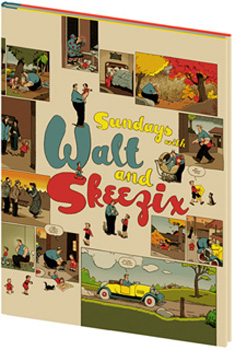
 Although he was under no obligation to do so, Tom Spurgeon didn’t post the full text of my response to the news that Fantagraphics has signed an exclusive deal with Diamond… It’s a little more balanced and nuanced then what ended up in the CR piece, in my always-humble opinion, so I figured I’d post it here.
Although he was under no obligation to do so, Tom Spurgeon didn’t post the full text of my response to the news that Fantagraphics has signed an exclusive deal with Diamond… It’s a little more balanced and nuanced then what ended up in the CR piece, in my always-humble opinion, so I figured I’d post it here.  I hinted at it in some of my brief New York posts, but I thought I’d maybe blog a little more thoroughly about my conversation with Marc Weidenbaum, the fella at Viz in charge of Shonen Jump and Shojo Beat, about his work developing a new line of original comics for Viz. We found a bench to sit and chat for an hour on the Friday of the New York Comic Con–just after the announcement of ULTIMO! a collaboration between Stan Lee and Hiroyuki Takei debuting in Japan that very day. It’s worth noting that, for the purposes of journalistic integrity, Marc and I have become fairly cordial over the past few years, and our conversation about the new developments at Viz were much more friendly than professional. I even offered to send this to him before I posted it (something I don’t normally do) in case I got anything wrong, but he said not to bother. So, here’s my take on what’s happening at Viz with their forthcoming line of original comics.
I hinted at it in some of my brief New York posts, but I thought I’d maybe blog a little more thoroughly about my conversation with Marc Weidenbaum, the fella at Viz in charge of Shonen Jump and Shojo Beat, about his work developing a new line of original comics for Viz. We found a bench to sit and chat for an hour on the Friday of the New York Comic Con–just after the announcement of ULTIMO! a collaboration between Stan Lee and Hiroyuki Takei debuting in Japan that very day. It’s worth noting that, for the purposes of journalistic integrity, Marc and I have become fairly cordial over the past few years, and our conversation about the new developments at Viz were much more friendly than professional. I even offered to send this to him before I posted it (something I don’t normally do) in case I got anything wrong, but he said not to bother. So, here’s my take on what’s happening at Viz with their forthcoming line of original comics. That last part is particularly intriguing to me, because while producing licensed material does have Viz editors sharing some of the same duties as their original-content producing counterparts in the rest of the North American comics industry–scheduling, proofing, working with creative talent–the Japanese editorial system, the one that Marc referenced a couple of times, is quite different and even more involved than anything you’ll find in North America… In a bit of a coincidence I picked up a new manga by Fanfare/Ponent-Mon at the New York Comic Con just before I was talking to Marc, called Disappearance Diary by Hideo Azuma. It’s about this manga-ka that goes nuts from stress and becomes a bum living in the mountains. In it, the protagonists manga editors are variously portrayed as abrasive, mean, and egomaniacs who threaten and taunt him, draw over his artwork to change it to their liking, and ignore or encourage any number of truly life-destroying behaviours on the part of Azuma-san… as long as the work comes in on time. It’s a comedy. And autobiography to boot.
That last part is particularly intriguing to me, because while producing licensed material does have Viz editors sharing some of the same duties as their original-content producing counterparts in the rest of the North American comics industry–scheduling, proofing, working with creative talent–the Japanese editorial system, the one that Marc referenced a couple of times, is quite different and even more involved than anything you’ll find in North America… In a bit of a coincidence I picked up a new manga by Fanfare/Ponent-Mon at the New York Comic Con just before I was talking to Marc, called Disappearance Diary by Hideo Azuma. It’s about this manga-ka that goes nuts from stress and becomes a bum living in the mountains. In it, the protagonists manga editors are variously portrayed as abrasive, mean, and egomaniacs who threaten and taunt him, draw over his artwork to change it to their liking, and ignore or encourage any number of truly life-destroying behaviours on the part of Azuma-san… as long as the work comes in on time. It’s a comedy. And autobiography to boot. I was having a hard time getting an idea of this ‘line’ at this point in our conversation, what it might look like, and I couldn’t tell if it was going to be akin to Tokyopop’s “hire’m all and let the market sort’em out” original content strategy, or something a little different. So I asked him flat out–name five books published in the last few years that you could see as part of this line. His response? “None.” Really, not one book? “Not really, I don’t see a lot of the work fitting our ideas. Maybe elements of
I was having a hard time getting an idea of this ‘line’ at this point in our conversation, what it might look like, and I couldn’t tell if it was going to be akin to Tokyopop’s “hire’m all and let the market sort’em out” original content strategy, or something a little different. So I asked him flat out–name five books published in the last few years that you could see as part of this line. His response? “None.” Really, not one book? “Not really, I don’t see a lot of the work fitting our ideas. Maybe elements of  He knew it, but made it pretty clear he had no interest in submissions right now. “Maybe in a few years we’ll open it up to submissions,” said Marc. “But right now I just want to see already completed work. What you’ve done, what you’re capable of.” So if you’re sitting on the world’s best manuscript for a 3400 part serial about a new level of Super-Saiyan, can it. At least for a little while. But I do have to say that Marc seemed quite genuine about wanting to see published work and specifically mentioned webcomics, mini-comics and self-pub’d work as well as professionally published material…
He knew it, but made it pretty clear he had no interest in submissions right now. “Maybe in a few years we’ll open it up to submissions,” said Marc. “But right now I just want to see already completed work. What you’ve done, what you’re capable of.” So if you’re sitting on the world’s best manuscript for a 3400 part serial about a new level of Super-Saiyan, can it. At least for a little while. But I do have to say that Marc seemed quite genuine about wanting to see published work and specifically mentioned webcomics, mini-comics and self-pub’d work as well as professionally published material…
